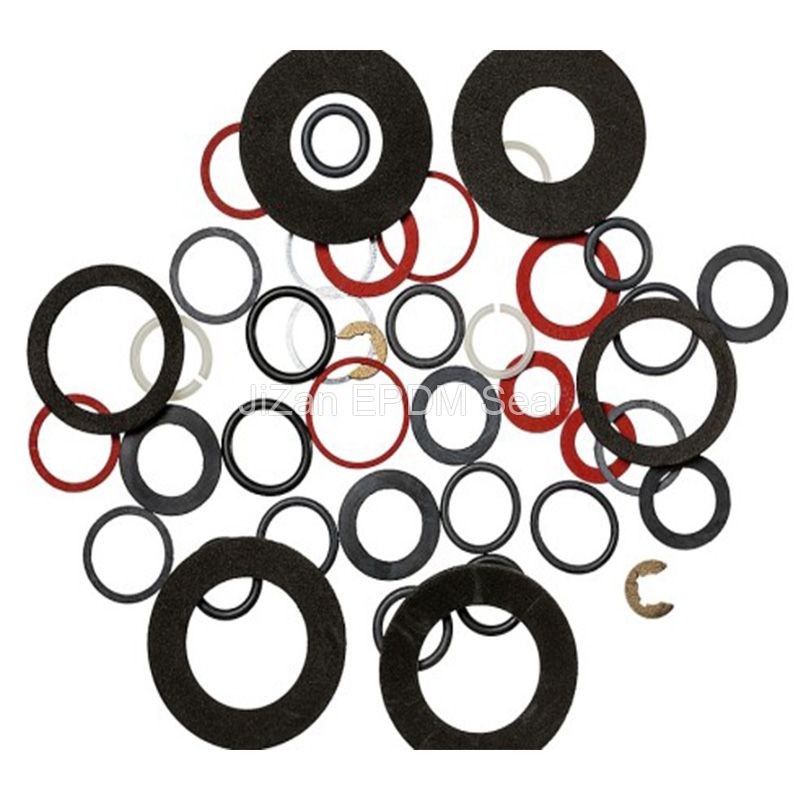How do I choose the right sealing gasket?
Selecting the appropriate sealing gasket is a critical decision that can significantly impact the efficiency, safety, and longevity of your mechanical systems. From pipelines to industrial machinery, the right gasket ensures a leak-free connection and prevents the escape of fluids and gases. In this guide, we'll walk you through the essential factors to consider when choosing the right sealing gasket for your specific application.
Understanding the Application:
The first step in choosing the right sealing gasket is to thoroughly understand the application in which it will be used. Consider the following aspects:
Fluid or Gas Type: Different gaskets are designed to handle specific types of fluids and gases. Determine whether the application involves liquids, chemicals, gases, or a combination, as this will guide your material selection.
Temperature and Pressure: Assess the temperature and pressure conditions that the gasket will be exposed to. High-temperature and high-pressure environments require gasket materials with exceptional resistance to heat and compression.
Environment: Is the application indoors or outdoors? Will the gasket be exposed to sunlight, moisture, chemicals, or other environmental factors? Choose a material that can withstand the conditions it will encounter.
Flange Type: Consider the type of flange being used, as this influences the shape and dimensions of the gasket required. Flanges can be raised, flat, or serrated, and the gasket should match the flange configuration.
Selecting the Right Material:
The choice of gasket material is crucial for its effectiveness and longevity. Different materials offer varying levels of resistance to temperature, pressure, chemicals, and environmental factors. Common gasket materials include:
Rubber: Rubber gaskets, such as neoprene, nitrile, and EPDM, are flexible and offer good resistance to water and oils. They are commonly used in plumbing and automotive applications.
Metal: Metal gaskets, made from materials like stainless steel or copper, excel in high-temperature and high-pressure environments. They are ideal for industrial applications.
Fiber: Compressed fiber gaskets, like those made from aramid or cellulose, offer good general-purpose sealing and chemical resistance.
PTFE (Polytetrafluoroethylene): Often known as Teflon, PTFE gaskets are highly resistant to chemicals and suitable for corrosive environments.
Graphite: Graphite gaskets are known for their excellent heat resistance and are often used in high-temperature applications.
Cork: Cork gaskets are compressible and used for low-pressure applications where flexibility is important.
Matching the Gasket Design:
Choosing the right gasket design ensures a proper fit and reliable sealing. Consider these design factors:
Gasket Type: Different applications require specific gasket types, such as flat gaskets, ring gaskets (O-rings), spiral wound gaskets, or metal-jacketed gaskets. Each type has unique sealing characteristics.
Size and Dimensions: Accurate measurement of the mating surfaces and flanges is essential to select a gasket with the correct dimensions. A well-fitted gasket ensures optimal compression and sealing.
Bolt Hole Pattern: Ensure that the gasket's bolt hole pattern aligns with the flange's bolt holes for proper installation.
Compression and Load: Consider the amount of compression required to achieve a reliable seal. Proper compression prevents under-compression or over-compression, both of which can lead to leaks.
Chemical Compatibility:
The gasket material must be compatible with the fluids, gases, and chemicals it will come into contact with. Certain materials may react negatively with specific substances, leading to degradation, leaks, or safety hazards. Always ensure that the chosen gasket material can withstand the chemical environment it will be exposed to.
Industry Standards and Regulations:
Depending on the industry you're in, there might be specific standards and regulations governing gasket materials and performance. For example, the food and pharmaceutical industries often require gaskets that meet specific sanitary and cleanliness standards. Make sure the gasket you choose complies with the relevant industry regulations.
Cost and Longevity:
While it's important to consider the budget, keep in mind that investing in a high-quality gasket may be cost-effective in the long run. Cheap, low-quality gaskets may fail quickly, leading to frequent replacements and potential downtime. Balancing cost with the expected lifespan and performance of the gasket is crucial.
Consulting with Experts:
If you're uncertain about which gasket to choose, don't hesitate to consult with experts or suppliers who specialize in gaskets and sealing solutions. They can provide valuable insights based on their experience and knowledge, helping you make an informed decision.
Installation and Maintenance:
Even the best gasket won't perform optimally if not installed and maintained correctly. Follow manufacturer recommendations for gasket installation techniques, torque specifications, and compression levels. Regular inspections and maintenance can also help detect early signs of gasket wear or degradation.
In Conclusion:
Choosing the right sealing gasket requires a comprehensive understanding of the application, materials, design, and environmental factors involved. By considering the fluid or gas type, temperature, pressure, and flange configuration, you can narrow down your options. Selecting the appropriate material, design, and size ensures a reliable seal that prevents leaks and contributes to the overall efficiency and safety of your systems. When in doubt, seek advice from professionals in the field to make an informed decision that aligns with your requirements.
170
0
0



Comments
All Comments (0)